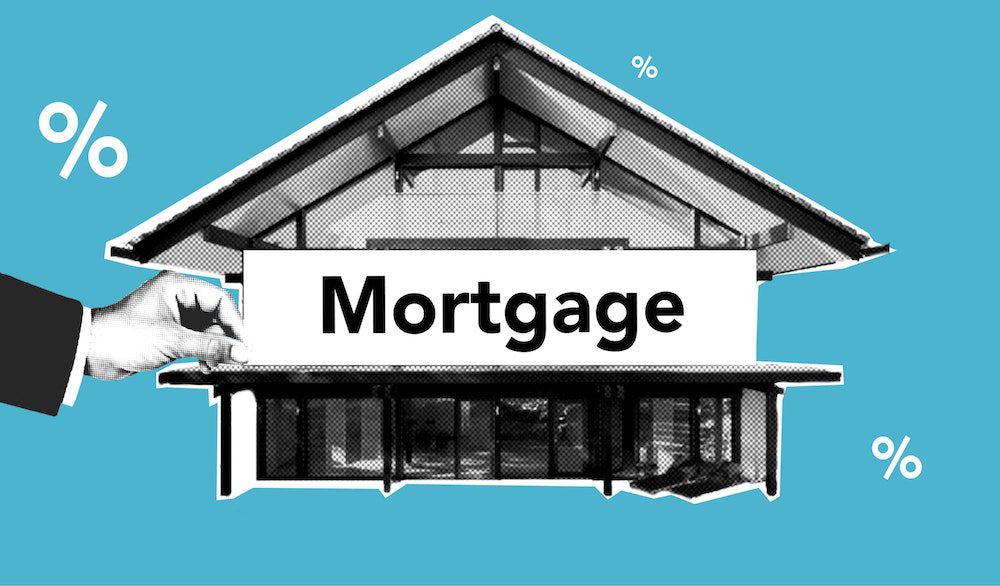1 What is Home Loan Refinancing?
Home loan refinancing is a financial strategy that allows homeowners to replace their existing mortgage with a new one. The primary goal is often to secure more favorable loan terms, such as lower interest rates or reduced monthly payments. Refinancing can be a powerful tool for managing your financial well-being, but it’s essential to consider various factors before making this significant decision.
2 The Importance of Consideration
Before diving into the specifics of home loan refinancing, it’s crucial to emphasize the significance of careful consideration. A well-informed refinance decision can lead to substantial savings and financial benefits. Conversely, rushing into refinancing without evaluating your options can result in costly mistakes. This guide will help you navigate the intricacies of home loan refinancing and make informed choices.
3 Factors to Consider When Deciding to Refinance Your Home Loan
In this section, we’ll delve into the essential factors and questions you should consider when contemplating home loan refinancing.
3.1 General Considerations
A. Fast Refinance: Is It Right for You?
Fast refinance is a quick refinancing process that some lenders offer. It can be an attractive option for homeowners looking to expedite the refinancing process. However, it’s essential to weigh the pros and cons:
- Pros of Fast Refinance:
- Reduced paperwork and documentation requirements.
- Faster approval and access to the new loan terms.
- Cons of Fast Refinance:
- Potential for slightly higher interest rates compared to standard refinance options.
Real-Life Scenario: Sarah, a homeowner in need of urgent financial relief, opted for fast refinance. She was able to access lower monthly payments within weeks, preventing a financial crisis.
B. How Much Equity Do I Need to Refinance?
Equity in your home plays a crucial role in refinancing. Equity is the difference between your home’s current market value and the outstanding balance on your mortgage. Lenders often require a minimum level of equity to qualify for refinancing. The specific equity requirement can vary by lender and loan type.
Real-Life Scenario: John, a homeowner with 20% equity in his property, was eligible for favorable refinancing terms, including a lower interest rate. This allowed him to save significantly on his monthly mortgage payments.
C. Why Is Your Refinance Taking So Long?
The time it takes to complete the refinance process can vary, and delays are not uncommon. Understanding the reasons behind these delays can help you manage your expectations and take steps to expedite the process.
Common reasons for delays in refinancing include:
- Document Processing: Delays can occur if there are issues with document processing, such as missing or incomplete paperwork.
- Appraisal Issues: If the home appraisal comes in lower than expected, it can impact the loan terms and require renegotiation.
- Underwriting Challenges: The underwriting process may be prolonged if there are complex financial situations or credit issues.
Real-Life Scenario: Mark experienced delays in his refinance due to appraisal issues. His home was appraised lower than anticipated, leading to negotiations with the lender to secure the desired loan amount.
Want to Refinance? Call Us at 1300-401-847
Or Fill the Form below and we will get back to you ASAP
4 Cash-Out Refinance: What You Need to Know
Cash-out refinance is a unique refinancing option that allows homeowners to access their home equity in the form of cash. Here, we’ll explore the intricacies of cash-out refinance.
4.1 Understanding Cash-Out Refinance
A. Cash-Out Refinance: A Deeper Dive
Cash-out refinance is distinct from standard refinancing because it allows homeowners to access a portion of their home’s equity in cash. This cash can be used for various purposes, such as debt consolidation, home improvements, or other financial needs.
Pros of Cash-Out Refinance:
- Debt Consolidation: You can use the cash to pay off high-interest debts, such as credit cards or personal loans, potentially reducing your overall interest expenses.
- Home Improvements: Accessing your equity can fund renovations or upgrades to increase your home’s value.
Cons of Cash-Out Refinance:
- Increased Mortgage Debt: Taking cash out means you’ll have a higher mortgage balance, which may lead to higher monthly payments.
Real-Life Scenario: Emily used a cash-out refinance to fund her kitchen renovation. By increasing her mortgage slightly, she not only improved her living space but also added value to her home, making it a wise investment.
B. Cash-Out Refinance in Australia
If you’re an Australian homeowner, it’s essential to be aware of specific considerations related to cash-out refinance in the Australian market. Regulations and market trends can impact your options.
Australian Considerations:
- Regulations: Australian regulators have imposed stricter lending criteria for cash-out refinancing to prevent over-leveraging. Lenders may require evidence of a genuine need for the cash.
- Market Trends: The Australian property market’s conditions can influence the feasibility of cash-out refinance. It’s crucial to assess whether the timing is right for your financial goals.
C. What Happens to My Redraw When I Refinance?
In Australia, many mortgages offer a feature called redraw, allowing you to access any extra payments you’ve made on your loan. However, refinancing can impact your access to redraw funds.
When you refinance, your existing loan is paid off with the new one. This can affect your redraw facility in two ways:
- Partial or Full Closure: Some lenders may close your redraw facility entirely, while others may partially close it. This means you may not be able to access the funds you’ve previously contributed.
- Reactivation Period: If your redraw facility is closed, it’s essential to check if there’s a reactivation period during which you can access your funds again.
Real-Life Scenario: Michael refinanced his mortgage to take advantage of lower interest rates. However, he didn’t realize that his redraw facility would be partially closed. Fortunately, he could access the remaining funds after a short reactivation period.
5 Mortgage Brokers and Refinance
5.1 The Role of Mortgage Brokers
A. Refinance Mortgage Brokers: Your Refinancing Allies
Mortgage brokers play a vital role in the refinancing process. They act as intermediaries between borrowers and lenders, helping you find the most suitable loan options and navigate the complex mortgage landscape.

How Mortgage Brokers Help with Refinancing:
- Market Knowledge: Mortgage brokers have access to a wide range of lenders and can help you find the best deals in the market.
- Streamlined Process: They simplify the application process, gather necessary documentation, and liaise with lenders on your behalf.
- Customized Advice: Brokers offer personalized advice tailored to your financial situation and goals.
Real-Life Scenario: Susan, a homeowner overwhelmed by the multitude of refinancing options, enlisted the help of a mortgage broker. With their expertise, she secured a refinanced loan that aligned perfectly with her financial goals.
B. Aussie Home Loans Refinance Services
Aussie Home Loans is a well-known name in the Australian mortgage industry, offering a range of services, including refinancing. Here’s an overview of how Aussie Home Loans can assist with your refinancing needs.
Services Offered by Aussie Home Loans:
- Loan Comparison: Aussie Home Loans can compare loan options from various lenders to find the best fit for your needs.
- Application Assistance: They can help you complete the application process, ensuring all necessary documents are submitted accurately and promptly.
- Expert Advice: Aussie Home Loans’ consultants provide expert advice on refinancing strategies and loan products.
Real-Life Scenario: James and Lisa decided to explore refinancing options through Aussie Home Loans. With the guidance of an Aussie Home Loans consultant, they were able to secure a loan with lower interest rates, reducing their monthly payments and saving money over the long term.
6 Can you Refinance a Personal Loan?
6.1 Exploring Personal Loan Refinancing
A. Can You Refinance a Personal Loan with Your Home Loan?
Refinancing a personal loan through your home loan is a possibility, but it’s essential to understand the considerations and potential risks involved.
Considerations for Personal Loan Refinancing:
- Interest Rates: Home loan interest rates are typically lower than those for personal loans, making it potentially advantageous to consolidate high-interest personal debt into your mortgage.
- Extended Repayment Period: By rolling a personal loan into your home loan, you can extend the repayment period, reducing the immediate financial burden.
- Risks: However, consolidating personal loans into a home loan may lead to higher long-term interest costs if not managed carefully.
Alternatives to Consider: Homeowners should also explore alternative strategies for managing personal loan debt, such as debt consolidation loans or budgeting to pay off personal loans faster.
7 Fixed Loans vs. Split Loans: Refinancing Options
7.1 Understanding Fixed and Split Loans
A. Can You Refinance a Fixed Loan?
Fixed-rate home loans offer stability and predictability in mortgage payments by locking in an interest rate for a specified period. Refinancing a fixed loan involves some unique considerations.
Considerations for Refinancing a Fixed Loan:
- Break Costs: If you refinance a fixed loan before the fixed period expires, you may incur break costs or early repayment fees.
- Rate Comparison: It’s crucial to compare the current fixed rates with your existing rate to determine whether refinancing makes financial sense.
Real-Life Scenario: Michelle had a fixed-rate mortgage, but interest rates dropped significantly. She chose to refinance despite break costs because the lower interest rate would save her money in the long run.
B. Can You Refinance a Split Loan?
A split loan is a combination of fixed and variable rate portions, offering flexibility and stability. When refinancing a split loan, homeowners must consider their unique loan structure.
Considerations for Refinancing a Split Loan:
- Adjusting Split Portions: Homeowners can adjust the split between fixed and variable rates when refinancing to align with their current financial goals and market conditions.
- Interest Rate Trends: Refinancing allows homeowners to capitalize on favorable interest rate trends, potentially lowering overall interest costs.
Real-Life Scenario: David and Lisa had a split loan but wanted to take advantage of falling interest rates. They refinanced by adjusting their split portions, securing lower interest rates on the variable portion of their loan.
Want to Refinance? Call Us at 1300-401-847
Or Fill the Form below and we will get back to you ASAP
8 Construction Loans and Refinancing: What You Should Know
8.1 Navigating Construction Loan Refinancing
A. Can You Refinance During Construction?
Refinancing during the construction phase presents unique challenges and opportunities. Understanding the process is crucial for homeowners with construction loans.
Considerations for Refinancing During Construction:
- Drawdowns and Progress Payments: Refinancing during construction requires careful management of drawdowns and progress payments to contractors.
- Loan Terms Adjustment: Homeowners may need to adjust loan terms when refinancing during construction to accommodate the completion timeline.
Real-Life Scenario: Peter decided to refinance his construction loan midway through his home build. With proper planning and coordination with the lender and builder, he successfully managed the process and secured improved loan terms.
B. Case Study: Successful Construction Loan Refinancing
To illustrate the potential benefits of refinancing during construction, let’s explore a real-life case study.
Case Study: Emma’s Construction Loan Refinancing
- Situation: Emma had a construction loan for her new home but realized that interest rates had dropped significantly since she began the project.
- Refinancing Strategy: Emma decided to refinance during the construction phase to take advantage of lower interest rates.
- Outcomes: By refinancing, Emma secured a lower interest rate, resulting in reduced interest costs over the life of the loan. This enabled her to complete her home build without increasing her overall expenses significantly.
9 Exploring Other Refinancing Options
9.1 Beyond Standard Home Loans
In this section, we’ll explore alternative refinancing options that go beyond traditional home loans.

A. Refinance Business Loan: A Strategy for Entrepreneurs
Business owners can benefit from refinancing their business loans to improve cash flow and reduce costs.
When to Consider Refinancing a Business Loan:
- Changing Business Needs: If your business’s financial situation has improved or evolved, refinancing can align your loan with your current needs.
- Interest Rate Savings: Lowering the interest rate on a business loan can lead to substantial savings over time.
Real-Life Scenario: Sarah, a small business owner, successfully refinanced her business loan when her company experienced growth. This allowed her to access additional working capital and invest in expanding her operations.
B. Boat Refinance: Unlocking Opportunities
Refinancing can extend beyond your home to other assets, such as boats or recreational vehicles. Using your home equity for boat refinancing is one such option.
Considerations for Boat Refinancing:
- Interest Rates: Explore the interest rates offered for boat refinancing compared to other financing options.
- Tax Implications: Consult with a financial advisor to understand the tax implications of using home equity for boat financing.
Real-Life Scenario: James and Emily refinanced their boat using home equity, benefiting from lower interest rates. This decision allowed them to enjoy their recreational activities without straining their budget.
C. Dollar for Dollar Refinance: Maximizing Home Equity
Dollar-for-dollar refinancing is a unique approach to accessing home equity without increasing your loan amount.
How Dollar-for-Dollar Refinancing Works:
- This strategy allows homeowners to access a dollar amount equivalent to their home equity without increasing their mortgage balance.
- The funds can be used for various purposes, such as home improvements, investments, or debt consolidation.
Real-Life Scenario: Brian and Mary used dollar-for-dollar refinancing to fund home improvements, increasing their property’s value without taking on additional mortgage debt.
10 Top-Up Loans vs. Refinance: A Detailed Comparison
10.1 Comparing Top-Up Loans and Refinancing
In this section, we’ll compare top-up loans and refinancing to help homeowners make informed decisions based on their unique financial circumstances.
A. Understanding Top-Up Loans
Top-up loans are a financing option that allows homeowners to borrow additional funds on top of their existing home loan. Here’s how they work:
- Purpose: Top-up loans are typically used for specific purposes, such as home renovations, investments, or other significant expenses.
- Interest Rates: The interest rates on top-up loans may differ from the existing home loan rate.
When to Consider a Top-Up Loan:
- If you have a specific financial need that requires a lump sum of cash.
- If you want to keep your existing mortgage and add to it for a specific purpose.
B. When to Choose Refinancing
Refinancing, on the other hand, involves replacing your existing home loan with a new one. Here’s why you might opt for refinancing:
- Interest Rate Improvement: If you can secure a lower interest rate on your new loan, it can lead to long-term savings.
- Loan Term Adjustment: Refinancing allows you to change the loan term, potentially reducing monthly payments or paying off your loan faster.
Real-Life Scenario: John decided to refinance his mortgage because he wanted to lower his monthly payments and take advantage of the lower interest rates available in the market. Refinancing allowed him to achieve both objectives.
Conclusion
In conclusion, home loan refinancing is a powerful financial strategy that can help homeowners achieve various goals, from lowering monthly payments to accessing cash for important expenses. However, the decision to refinance should not be taken lightly. It’s essential to carefully consider factors like equity, loan type, and specific financial needs before proceeding.
Additionally, working with professionals, such as mortgage brokers or financial advisors, can provide valuable guidance throughout the refinancing process. Ultimately, the key to successful refinancing is to align the strategy with your unique financial goals and circumstances.
By leveraging the information provided in this comprehensive guide, you can navigate the complex world of home loan refinancing with confidence and make informed decisions that benefit your financial future.





